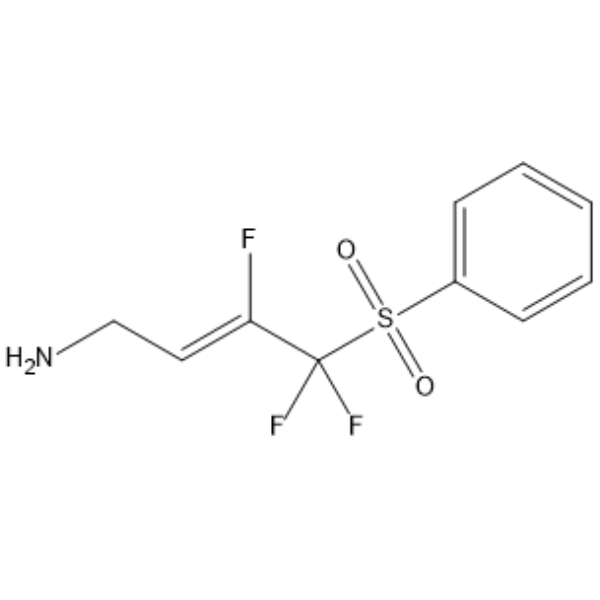| Description |
PXS-6302 is an irreversible lysyl oxidase inhibitor with IC50s of 3.7 μM (Bovine LOX), 3.4 μM (rh LOXL1), 0.4 μM (rh LOXL2), 1.5 μM (rh LOXL3), 0.3 μM (rh LOXL4), respectively. PXS-6302 has readily skin penetrability, reduces collagen deposition and significantly improves scar appearance[1].
|
| Related Catalog |
|
| Target |
3.7 μM (Bovine LOX), 3.4 μM (rh LOXL1), 0.4 μM (rh LOXL2), 1.5 μM (rh LOXL3), 0.3 μM (rh LOXL4)[1]
|
| In Vitro |
PXS-6302 demonstrates high permeability to across a monolayer of cells, such as Caco-2 or MDCKII cells[1].
|
| In Vivo |
PXS-6302 inhibits LOX, reduces crosslinking and improves scar appearance in porcine models of excisional and burn injury[1]. PXS-6302 (1.5%, oil in water cream; 500 mg cream applied to 16 cm2; external application; once daily, for 28 days) reduces collagen deposition and cross-linkin in murine models of injury and fibrosis under topical application[1]. PXS-6302 (0.5, 1.5, or 3%, oil in water cream; 400 mg cream applied to 16 cm2; external application; once daily, for 12 weeks) also significantly improves scar appearance without reducing tissue strength in porcine injury models under topical application[1]. Animal Model: Porcine excision injury model (female Juvenile pigs, 18-20 kg)[1] Dosage: 0.5, 1.5, or 3%, oil in water cream; 400 mg cream applied to 16 cm2 Administration: External application; 1, 2 and 3 weeks post-injury; once dayly, for 12 weeks Result: Showed significantly higher scores for the 3% treated scars suggesting significant improvement in scar appearance.
|
